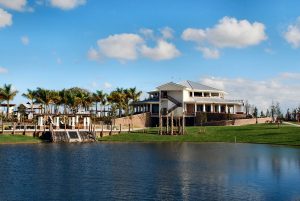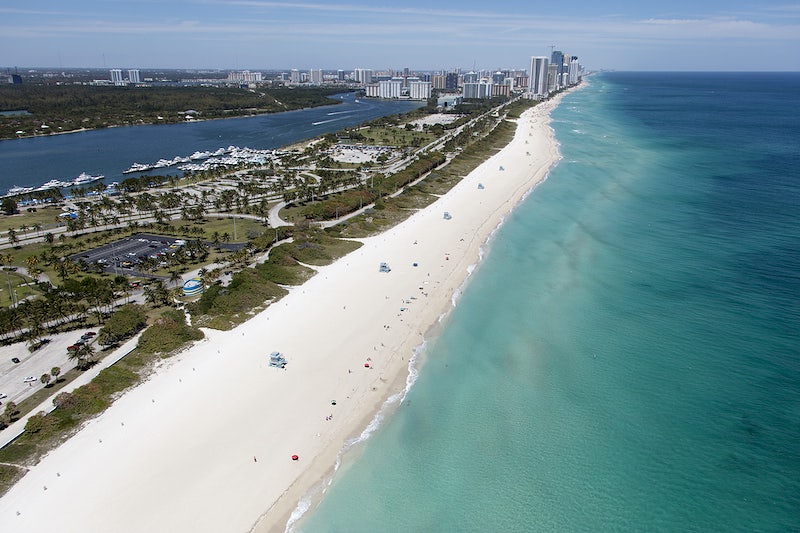Since its incorporation in 1959, Royal Palm Beach has grown to become a vibrant village of 25,000 residents. Born out of an uninhabited and former Seminole hunting ground, the picturesque village was founded by Lefcourt Realty Group founder Arthur Desser, who had an ambitious vision for the new town.
Early History
Royal Palm Beach has come a long way since its incorporation in 1959, growing from a primarily uninhabited swamp and former Seminole hunting ground into a vibrant village of nearly 25,000 residents. In the 1950s, Philadelphia supermarket magnates Sam and Hattie Friedland purchased 65,000 acres (260 km2) for approximately $1.25 million, which was then sold to Miami developer Arthur Desser, founder of Lefcourt Realty Group. With 4,200 acres (17 km2) earmarked for Desser’s Royal Palm Beach development, it is no wonder that the community quickly grew and established itself on the national fastest-growing community lists in the 1980s.
Desser had a vision for the new community and wanted its name to include “Palm Beach”, hence its namesake: Royal Palm Beach.
On June 30, 1959, with Seminole tribe officials in attendance to recognize the new community and forgo prior claims to the land, a groundbreaking ceremony was the start of a new era. Engineering work began on village waterways and roads, and a sales/recreational center with a motel facility was built. To make it accessible to the public, two-bedroom, one-bath model homes were constructed beginning at an affordable $8,250. In 1964, Village Council transitioned from being developer-appointed to being popularly elected. Finally, the Village Hall complex was established in 1977 and has since been the home of 15 mayors, some serving multiple terms, including Sam Lamstein (1982–1990), Tony Masilotti (1992–1998), and David Lodwick (since 1998).

Arthur Desser’s ambitious vision for a “nouveau” Palm Beach was realized with the establishment of Royal Palm Beach Colony Inc. and Herbert Kaplan as its CEO, ushering in a period of growth and prosperity that continues to this day.
The marketing push of 1979 to offer tracts of land to builders resulted in the village ballooning over 15 years. In 1983, Crestwood Middle School opened as the first community school, with H.L Johnson and Cypress Trails Elementary Schools following in 1985 and 1989 respectively. Royal Palm Beach High School opened to 1,100 students in 1997 and the 2002-2003 school year saw the opening of the village’s third elementary school on Okeechobee Blvd., near Madison Green residential development. Opening in rapid succession, these schools were often at or near capacity in their first year, a testament to the success and popularity of the village.
In 1986, two medical centers were established to meet the healthcare needs of residents: Palms West Hospital with 117 beds, and Wellington Regional Medical Center with 120 beds. Subsequently, a building boom of medical office complexes on both campuses was seen, as well as a Royal Palm Beach Health Center built by Good Samaritan Medical Center. Moreover, public safety has always been at the forefront for village officials since 1960 when Joseph Klopp became the first Royal Palm Beach Police Chief. The dedicated department now boasts nearly 50 sworn officers in addition to dispatchers, school crossing guards, detectives, a captain, and the chief, all housed in a modern computerized department within the Village Hall complex. A contract with the Palm Beach County Sheriff’s Department in 2007 further cemented Royal Palm Beach’s commitment to providing safe and reliable policing services while saving taxpayers money.
Royal Palm Beach has long been grateful for the protection of its fire department. It all began in January 1963 when a group of 8 volunteers gathered in a construction trailer and established the initial force. By 1969, they had moved to a maintenance building in Commerce Park with 3 bays and two trucks. In 1976, the department relocated to its building on Royal Palm Beach Blvd. This enabled them to increase their staff and equipment and also to share the building with the police department.
In 1975, Combs was the first full-time fire chief, and with a growing population and few structural fires, the focus shifted to emergency medical treatment. After Combs and a department lieutenant enrolled in the county’s first paramedic-rescue course, they were able to save the life of a village resident who would have otherwise died without their intervention. The department continued to grow, adding 18 additional paramedic/EMT-trained firefighters within the next four years and opening a second station in 1994. Finally, in 1999, after consulting with experts, the decision was made to merge with Palm Beach County Fire-Rescue, solidifying Royal Palm Beach’s proud history of providing top-notch fire protection services.
Royal Palm Beach was recognized as a Tree City USA in 1990, and its entire area is designated as a bird sanctuary. The village’s Recreation Department has been ensuring that the needs of its citizens are met since 1974. As a testament to that, they have provided 325 acres (1.32 km2) of parks and green space, as well as a 6,300-square-foot (590 m2) Cultural Center which opened in 1993.
Today, Royal Palm Beach is an exemplary example of a fruitful municipality. The dedication and commitment of the Friedlands, Desser, and Seminole tribe officials, councilors, mayors, and residents alike have built a vibrant destination for its inhabitants. Boasting many recreational offerings from conservation areas to sports and more, this municipality continues to attract prospective Floridians and remains a leader in leading-edge technology, charming homes, and numerous residential opportunities.
Read More





